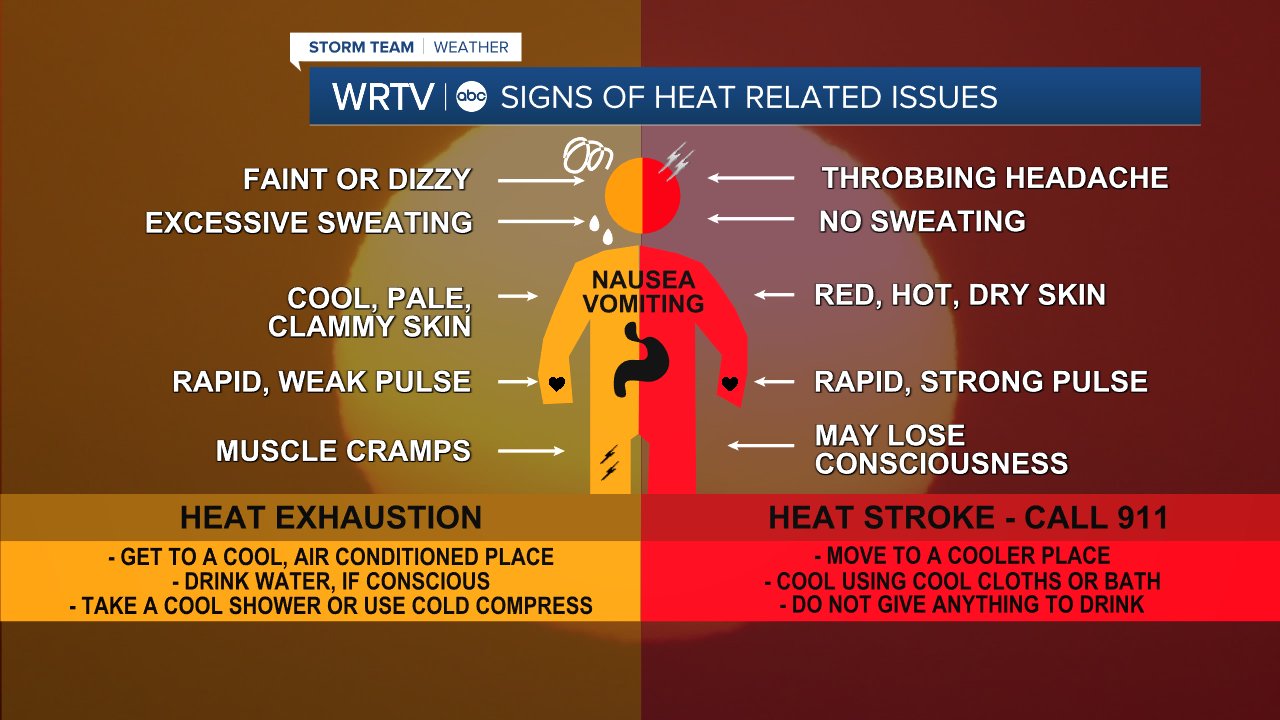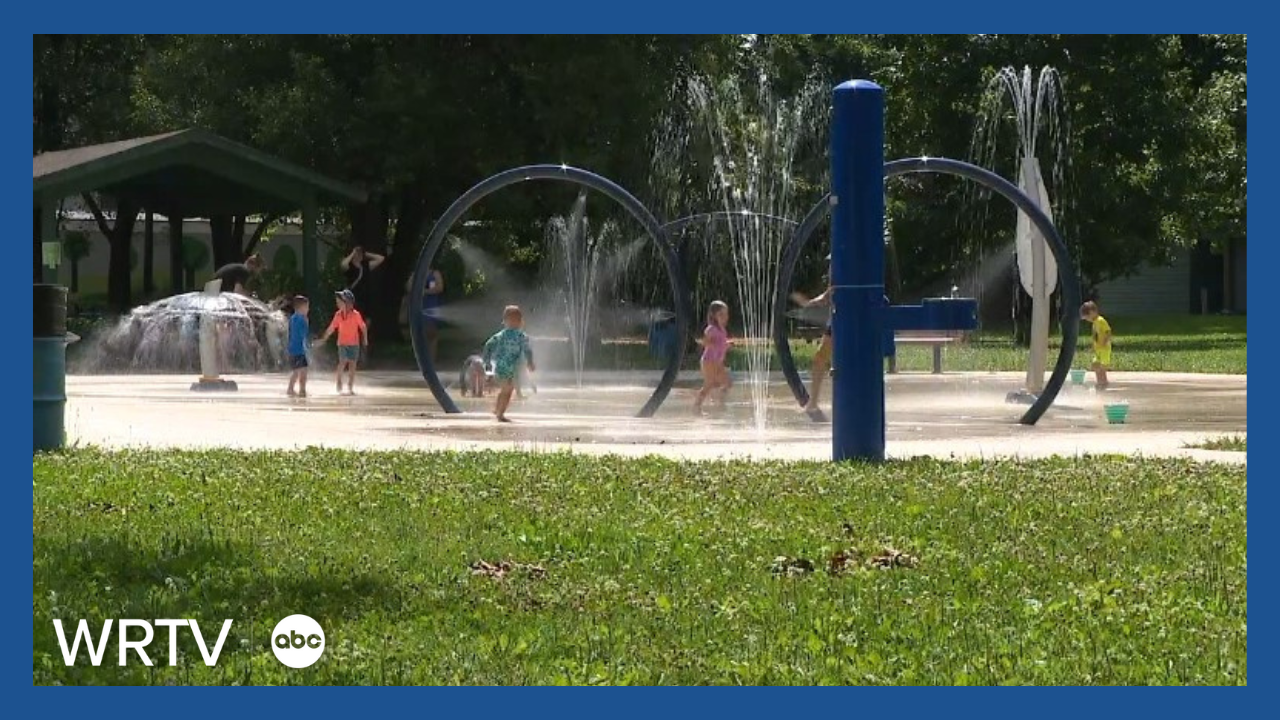INDIANAPOLIS — Central Indiana is prepping for yet another hot, humid week: heat indices could climb more than 100 degrees by mid-week.
Did you know that humidity makes it more difficult for humans to cool?
Evaporative cooling is the process that helps cool our bodies. When humans are hot, we sweat. The sweat evaporates, leaving us feeling slightly cooler.
On humid days, the air is already full of moisture, which means it is more difficult for our sweat to evaporate. This means we don't get the benefit of feeling cooler.
Dr. Holly Harding is a physician at IU Health Urgent Care.
"When it's hot outside, we do see a lot of heat-related illnesses," Dr. Harding explained. "More specifically, when the humidity is high, we see a lot of heat exhaustion and a lot of heat-related illnesses."
How can you prevent heat illnesses?
"I would say just plan ahead," continued Dr. Harding. "Make sure you're staying nice and hydrated. If you have outdoor tasks to do, try to do them early in the day, you know, before it gets too terribly hot outside. Dress in light type of clothing, and plan your day appropriately."
Some symptoms, like heat cramps or heat rash, can be treated at home, according to Dr. Harding. Get into a shaded, cooler area, and focus on getting hydrated again.
Other symptoms, like confusion or feeling weak, might mean it is time to seek medical attention.

Dr. Harding shared that typically, heat-related illnesses will peak at Urgent Care on the first day or two of a hot, humid stretch, as the forecast catches people off guard.
It is also important to care for your pets during humid weather.
"Humidity can be a very big concern with our pets because they don't have the self-cooling mechanism like we do," explained Dr. Kristi Crow.
Dr. Crow is a veterinarian at City Way Animal Clinics in Fountain Square.
"They do have some cooling glands in their nose and in their paws, but not to a very high degree," Dr. Crow continued. "When humidity comes about, we get really concerned because this is when we can see dogs get into a dangerous zone of heatstroke."
A dog's temperature is normally warmer than humans, around 103 degrees. A dog with heatstroke could have a temperature closer to 105 degrees.
Signs to watch for in your pet include: excessive panting, difficulty breathing, belly breathing, confusion, loss of coordination, or collapsing.
If this happens, get your pet into a cooler area immediately.
Dr. Crow also wants to stop one myth.
"Something we're going to debunk today: a lot of pet owners think that you're immediately supposed to pour cold, cold ice water on your pet. That actually could be fatal," Dr. Crow shared.
You can cool your pet down by putting some water on them, but the temperature and timing are important.
"Gradually cool down your pet with lukewarm water," Crow continued. "Starting with pouring it at the paws and at the rest of the body. It's something that needs to be slowly done and gradually, and the key is lukewarm water, not cold water."
Pouring water that is too cold onto a dog with heatstroke could cause them to go into shock.
Dr. Crow shared some tips to help your pet stay safe from the heat.
"Keeping the walks in the very early morning or late night. If you have a dog that needs to be outside, we need to look at shaded areas, we need to make sure the temperature is even appropriate because we can start seeing concerns anywhere from 75 to 80 degrees with certain breeds," Dr. Crow stated.
Brachycephalics are some of the breeds that are more at risk.
"These are our smush face breeds. These are our French bulldogs, our English bulldogs, our boxers, our shih-tzu, anything that has a cute little smush face, they should just be inside," Dr. Crow explained. "It's better to be safe than sorry because those are the breeds we see succumb to heat stroke the most."
Other dogs that are more at risk for heatstroke include big dogs with thick fur (think Newfoundlands, St. Bernards, or Bernese Mountain dogs), older dogs, younger dogs, and overweight dogs.
Dr. Crow concluded by sharing that if you think your dog has any signs of heatstroke, try to cool them down, and contact your veterinarian or an emergency veterinarian right away.






